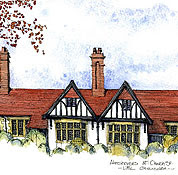LITTLE GRANSDEN PARISH COUNCIL
Chair: Oliver Hipwell, Hill Farm, 8 Main Road, Little Gransden SG19 3DN Tel: 017944 547685 email oliverhipwell.lgpc@gmail.com (Elected 5 May 2022; Vice-chair; Biodiversity and Tree Officer)
John Jefferies, Ash Tree Cottage, Little Gransden SG19 3BP email jrjefferies@btinternet.com (Co-opted 12 May 2022 )
Mrs Noushin Rostami, 34 Primrose Hill, Little Gransden SG19 3DP emailnrostami.lgpc@gmail.com (Elected 5 May 2022; co-ordinator Friendship Club)
Emma Ward 6 Main Road, Little Gransden SG19 3DN emmaward.lgpc@gmail.com (Elected 5 May 2022; trustee and parish council representative for Little Gransden Village Hall)
Aston Cox, Gransden Lodge, Longstowe Road, Little Gransden SG19 3EB (co-opted 11 May 2023
Clerk: Sylvia Sullivan, 3 Primrose Hill, Little Gransden SG19 3DP Tel: 01767 677906, email clerk.lgpc@aol.com Office hours: 10 a.m. to 4 p.m. Monday to Friday
Monday 17 December 2012
Little Gransden Energy Group (LGEG) - Nov 2012
Wednesday 12 December 2012
" The South Cambs Community Bus Service".
Wednesday 16 May 2012
Entry for Roundabout Magazine – May 2012 edition.
There are Open Eco Homes Weekends taking place on 12/13th May, and 26/27th
May 2012. This is an opportunity to visit houses that have been upgraded to improve
their energy efficiency, and lower their running costs. See www.openecohomes.org
for more information, and booking details for these homes. Prior booking is
essential! Phone no. 01223 301842.
A Green Deal Information Centre will be held between 10am and 5pm on 26th/
27th May at the Gamlingay Eco Hub, and there are free guided tours at 10.30am, 12
noon, 2pm and 3.30pm. This building is heated by ground source heat pump, the
water is heated by solar thermal panels to heat the water, and it also has a large
solar pv panel system for generating electricity. The building is also highly insulated.
Other Green Deal Information Centres are open on 12th May at Rampton Drift,
Longstanton, and on 13th May at Coton Village Hall.
The sun did certainly shine during the last week of March! The solar pv system at
15 Main Road generated 70 kWh of electricity during that week – this was more than
the electricity generated during any week last summer or autumn. This system has
now generated 1652 kWh of electricity since installation on 27th May 2011 and the
end of March 2012.
Contacts:
John Hawkins on telephone 677323. Email: jhaw207755@aol.com
Trevor Brown on telephone 677285. Email: trevor.brown40@hotmail.co.uk
Websites for your reference:
SCDC - Sustainable Parish Energy Partnership (SPEP) – www.spep.net
Energy saving trust (independent charity for advice) – www.energysavingtrust.org.uk
Heat Incentive Policy and "Green Deal" - latest information – www.decc.gov.uk
Wednesday 14 March 2012
Wednesday 7 March 2012
Parish Council Elections 2012
Could you be a parish councillor? Elections are held every four years – here is your chance to play a major part in your community! For more details of what is involved speak one of our councilors, or to the Clerk who will also have nomination forms.

